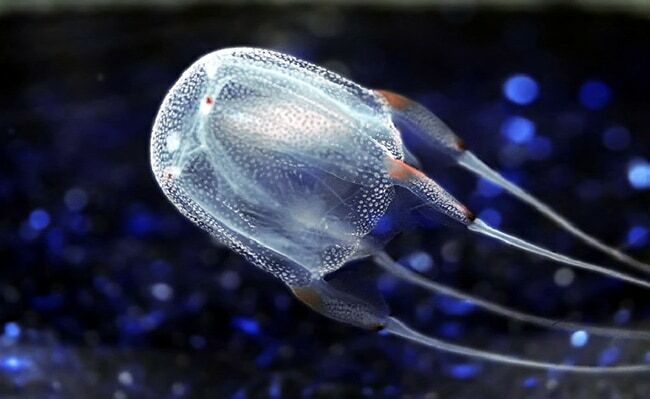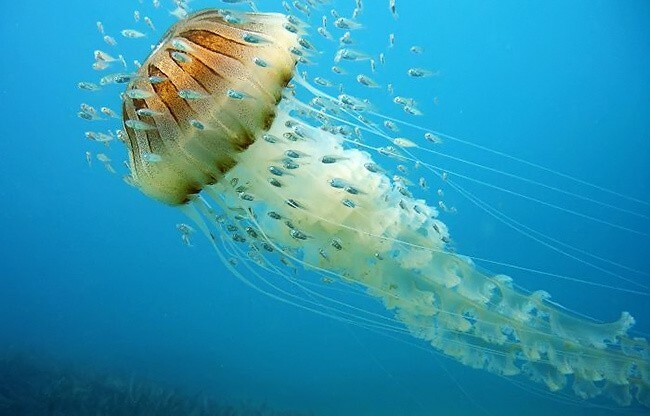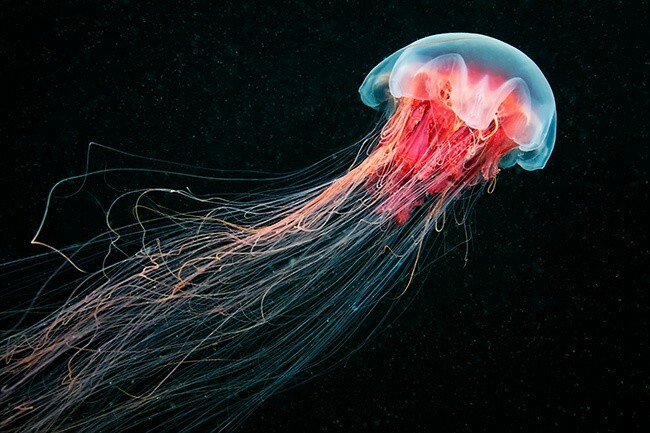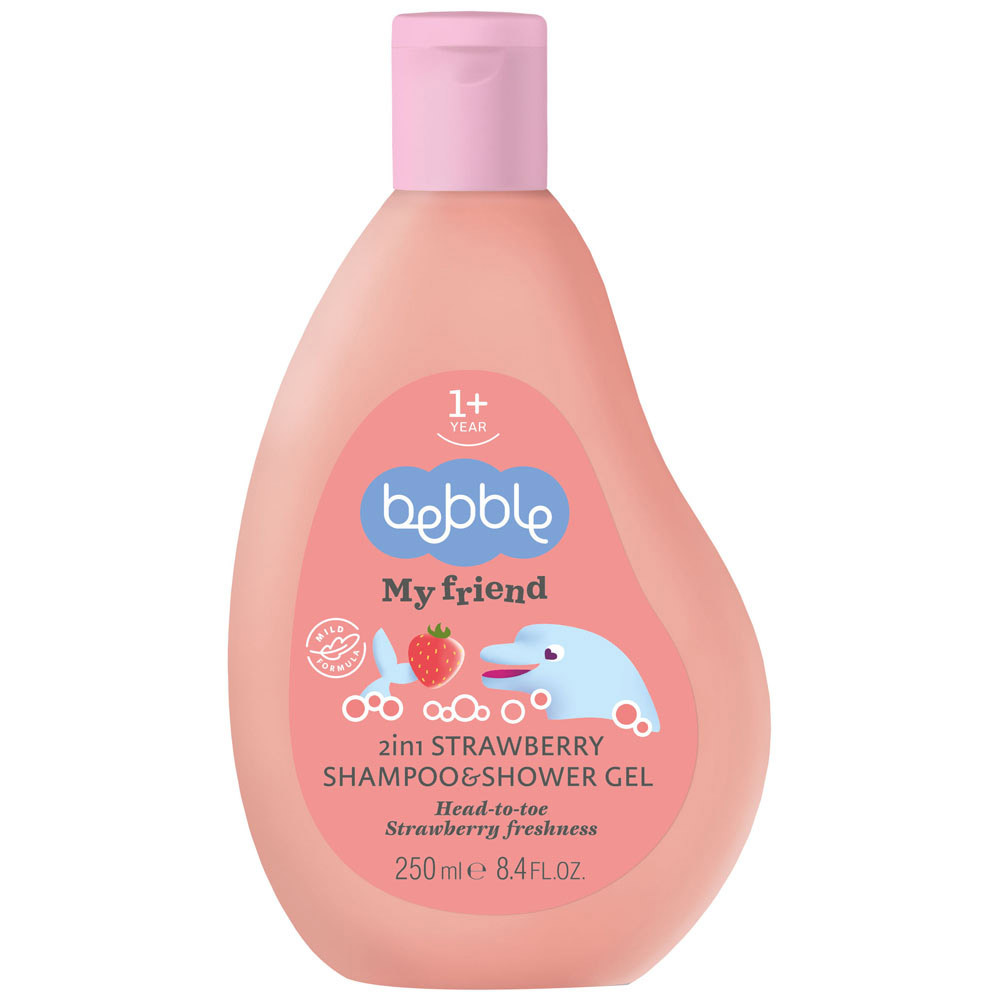Jellyfish are the oldest marine creatures that appeared hundreds of millions of years ago. The name of these underwater inhabitants was due to the similarity with the mythical creature Medusa Gorgona. The body of these representatives of marine life is more than 90% water. Their favorite habitat is salt water. Semi-transparent beings are the object of research of scientists. Poisonous and the largest jellyfish are of particular interest.
The ranking lists dangerous and the largest jellyfish in the world.
10
Medusa Irukandji 10 centimeters

Medusa Irukandji is one of the most poisonous Pacific jellyfish. The main habitat is the Australian waters. The diameter of its dome is about 10 centimeters. Irukandji has four tentacles, the length of which can reach 1 meter. The jellyfish sting is dangerous for a person and can cause a number of unpleasant consequences: pain in the whole body, nausea, vomiting, tachycardia and even lung edema. In rare cases, death may occur. Irukaji's poison possesses the property of delayed action, therefore the symptoms can be manifested for several days. Despite its small size, it represents a certain risk for bathers.
9
Medusa Pelagia 12 centimeters

Medusa Pelagia ( Nochesvetka) is one of the most beautiful discomoduses, which is common in the waters of the World and Atlantic Oceans, as well as in the Red and Mediterranean seas. The diameter of the jellyfish body reaches 12 centimeters. The color of the umbrella is purple-red and has florid ruffles along the edges. In addition to the stinging cells and tentacles, Pelagia has four mouth cavities. The jellyfish begins to glow at the moment of contact with any objects. The main living creature that feeds Nochesvetka is benthos, sometimes fry and crustaceans. A jellyfish is a certain danger for a person, since its sprayed poison causes a burn, and in some cases a shock.
8
Portuguese ship 25 centimeters

Portuguese ship ( Fisalia) - jellyfish is a bubble in the form of a "sailboat" floating on the surface of the water. The body of the "sailfish" is 25 centimeters, but the tentacles of Fisalia can reach 50 meters, which it hides underwater. Has a beautiful blue or purple color. The Portuguese boat prefers to eat fish larvae and small squid. Fisalia is one of the most poisonous sea jellyfish. Upon contact with her tentacles, a person receives a severe burn, which is accompanied by acute pain. The injected poison is capable of paralyzing all vital organs, so a stung swimmer can hardly stay on the water, and the person is drowning. The Portuguese boat is easy to see from afar, thanks to its bright and beautiful coloring, so you can avoid a meeting with him when swimming.
7
Aurelia 40 centimeters

Aurelia ( Eared jellyfish) is one of the most common species of large jellyfish. The body of Aurelia is almost transparent and reaches 40 centimeters. Numerous thin tentacles have stinging cells that affect prey. Four oral blades, resemble dangling ears, so Aurelia was called Ushastaya. It feeds mainly on plankton and crustaceans. The eared jellyfish does not pose a danger to humans, and its bite can cause only a burn. In Asian countries, Aurelius is used to make exotic dishes.
6
Australian Sea wasp 45 centimeters

Australian Sea wasp is the most poisonous inhabitant of the World Ocean. The main habitat of the species are the coasts of Indonesia and Australia. The dome of the Sea Horn is 45 centimeters and is equipped with 60 tentacles, which when hunting for prey can reach more than 3 meters. The sea animal has 24 eyes. It immediately stings the floating object in several places at once. Death from the bites of a poisonous jellyfish can come in a few minutes. The aggrieved swimmer receives a dose sufficient for a heart attack, and often sinks. It is quite difficult to notice this jellyfish because of transparency. The Australian wasp feeds on small fish and prawns.
5
Cornerot 60 centimeters

Cornerot is one of the of the largest marine jellyfish , which lives in the Black and Mediterranean seas. The weight of the marine life can reach 10 kg, and the diameter of the dome is 60 centimeters. For a person, Cornerot does not present a danger and is only able to cause slight irritation when contacting the tentacles. The cornetta umbrella is the "haven" of small fishes that hide beneath the dome from danger. This species feeds only on plankton. Jellyfish is actively used in medicine for the preparation of medicines, as well as in cooking. In Japan, Thailand and China from Cornerot prepare a variety of dishes.
4
Purple striped jellyfish 70 centimeters

Purple striped jellyfish is one of the largest and most elegant jellyfish that lives in the sea bay of Montarey. The dome of the animal reaches 70 centimeters and has a rich color. The bite of the Violet jellyfish can threaten a person with a severe burn. This species has not yet been thoroughly studied by science, so there is very little information about the animal.
3
Medusa Chrysaora 1 meter

Medusa Chrysaora ( Sea Nettle) - the inhabitant of the Pacific opens the three largest jellyfish of the world. The body of the adult Hriasory is able to reach 1 meter, and numerous tentacles - 4 meters. Tentacles torn off from the body can exist separately in the depths of the sea for several weeks and sting. Sea Nettle stings leave burns in the form of fine scars. The victims experience severe pain and burning, but do not pose any danger to human health. Hriasora - one of the most beautiful representatives of its species, so the animal is often kept in aquariums and aquariums. In the ocean's expanses, the Nettles feed on plankton and small jellyfish.
2
Nomur bell 2 meters

Nomur bell ( Lions mane) is one of the largest species of jellyfish that inhabit the seas of the Far East. The size of Nomura is 2 meters, and its weight can reach 200 kg. Marine animals damage the fishing industry. A giant hairy ball hits the net, tangling them. When the fishermen try to free the network, Nomura sharply stings a person. In the case of an allergic reaction to poison, a lethal outcome from the bite of the Lion's Mane is possible. From time to time, large-scale accumulations of Nomura are observed off the coast of the Sea of Japan.
1
Hairy Cyanide 2,3 meters

Hairy Cyane - takes first place among the giant jellyfish of the world. The body of individual Cyanine individuals can reach 2.3 meters, and the length of the tentacles is 37 meters. The main habitat of this species are the seas and oceans. These jellyfish rarely approach the shores and prefer to exist at 20 meter depths. The giant Cyane does not pose a serious danger to man. Her bite can only cause a burn. They feed on large individuals with plankton and other jellyfish.



